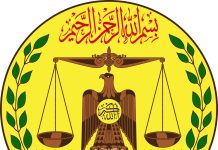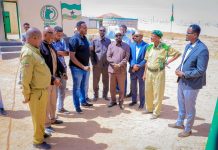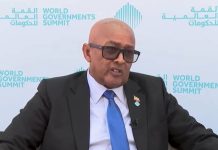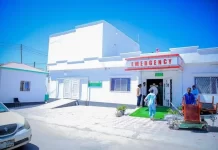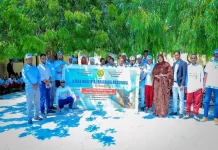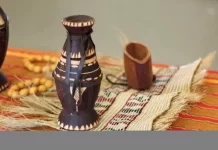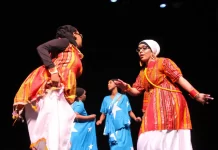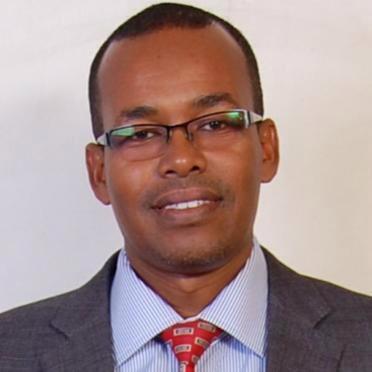Ever since the former regime of Mohamed Siyad Bare was toppled, the country descended into anarchy, cataclysm and chaotic situations that followed one after another. Clan-based militiamen turned out to be the key players that run the country’s day-to-day affairs. As a result, all social and governmental institutions fell at the mercy of mayhem and lawlessness ravaging the country.
Education became the first victim of this destruction as the physical buildings of schools were either destroyed or left in a state of no legitimate use. Formal schools and all learning/teaching centers were subject to indiscriminate demolition and lootings. Under the daylight sun, the looters sold textbooks, furniture and other educational materials without feeling any remorse. Moreover, due to the increasing insecurity, widespread lawlessness and economic hardships, most qualified teachers fled the country or sought refuge in relatively stable regions.
Era of guns, drugs and hopelessness
After the collapse of the system, a new phenomenon and a new sort of competition started. The warring factions spearheaded an evil race which its winner was the one that caused the largest possible havoc. The key players of that race were militiamen with assault weapons and armored vehicles who answered to no one except their greed, and evil wishes. Also, the criterion of becoming key player in that race was to be a heavy Kat user, preferably, drug addicted, cruel and desperate whose only skill is banditry, tribal street fighting and rape. Likewise, the rules of the game were provocation, destruction, indiscriminate shootings, and violation of all prevailing principles of Islamic teachings and human rights conventions.
This was the political situation of Somalia prior to the establishment of Amoud University. In Somaliland, although the situation was much better than in Southern Somalia, a favorable atmosphere for setting up a university was not either there. However, in the aftermath of the historic Borama Grand Conference in 1993, most of the social services including the education sector were resumed. Schools commenced with the combined efforts of the local community, the then fragile Somaliland government and the international community. However, the overall situation of the country’s most energetic and potentially most productive segment, the youth, was disheartening. The young people belonged to one of three groups. A group discouraged by the surrounding circumstances and the lack of education, re-channeled their efforts on self study schemes to improve their capacity through private schools and home tutoring. Another group was lured by the hallucinations of Kat chewing and spent most of their time in Kat chewing salons, known as “Marfash,” while still the third group attempted overtly and covertly and by all accessible means to leave the country.
The Creation of Amoud University and the return of hope
In this context, a group of intellectuals living and working in the Gulf States brought about a new initiative of establishing an institution of higher education. Motivated by their will to change the direction of the community, the group thought that the establishment of an institution of higher learning at Amoud Valley under the name of Amoud University would serve as the much-needed “vehicle for peace and development” Amoud University, the first post-conflict higher education institution in all over Somalia was officially inaugurated on Nov 4th, 1998. However, to many people, both inside and outside the country, the initiative seemed to be nothing more than emotional sentiment that was neither viable nor attainable. But, due to the unyielding commitment and untiring dedication demonstrated by Amoud University management team and all the other important key players and stakeholders, the project proved to be a shining example to be emulated. Apart from the founding individuals, the credit of establishing an institution of higher learning in a country like Somaliland-a country where everything from text-books, teaching materials, human and financial resources are scarce, goes to the university’s management team who sustained to work under very difficult circumstances.
Amoud Kick Starts Age of Educational Renaissance
Nevertheless, as soon as Amoud was set up, it has succeeded to change the course of life of all Somali-speaking communities. The establishment of Amoud University swerved the direction of the tournament from destruction to education. For instance, In Somaliland, since Amoud’s inception, the school enrolment had more than tripled as the young people were re-awakened by the completed educational ladder. Also, it accomplished to re-direct the energy and power of the local people into more productive schemes such as the creation of the appropriate environment of learning in an attempt of “creating hope for tomorrow’s generation” as the slogan of the university indicated. Youth, the key players of yesterday’s destruction were turned the fore-runners of the development path and the efforts of reviving the abandoned educational institutions. If the criteria of being a key player in yesterday’s tournament were young people armed with the Soviet made AK-47 Kalashnikov, now it has shifted to hard work, individual merits, healthy competition, positive thinking and intellectual debates- a criterion best captured by Dahir Mohamoud Haddi’s poem:
Hadaanu nahay hurintayada
Hawshoodu Cammuud ay tahay
Haybtoodu aqoonta tahay
Hubkooduna qalinka yahay
Amaanku u haynta yahay
Similarly, educational renaissance, healthy competition, respect of human rights, ethics and social responsibility, voluntarism, participation of community development projects, nurturing the culture of peace and producing skilled human beings who are capable of solving their conflicts through convincing and compromise became the rules of the new tournament. This race, which Amoud University was widely credited as its initiating and pioneering institution was nothing less than the European educational renaissance that started in Europe in the last millennium.
Since its commencement, almost another dozen institutions of higher learning sprung up throughout the former Republic of Somalia- all following the footsteps of Amoud University. Among others, they include University of Hargeisa, Banadir University, East Africa University (Bosaso), Burco University etc.
The tolerance and the strong determination, in which Amoud University management team, lecturers and students demonstrated alike, rightly sent a strong signal to the afore-mentioned institutions. The essence of this signal was simple and clear: commitment, sincerity, professionalism and better management of the limited available resources could make a profound difference.
More importantly, the establishment of Amoud University served as a unifying factor whereby it put the internal strife to a constant end. Without exception, all the segments of the society put their differences aside and united their meager resources for the realization of one common cause- the betterment of their young generation’s future through assisting Amoud University and similar institutions stand their feet firmly on the ground. Moreover, the newly-emerged phenomenon-mushrooming of universities- challenged the attitudes of policy-makers, social entrepreneurs and the laymen alike who before Amoud, thought that only governments with economic surpluses could set up and run universities.
As Amoud university alumni and member of the first batch of this pioneering and confidence-restoring institution, I could clearly recount the astonishment coupled with the sense of delight and pride one could visibly read on the faces of Amoud University visitors who came from every corner of the earth to witness what is going on at Amoud University. One of these experiences flashes in my memory every now and then. Early in 1999, a delegation came from eastern regions of Somaliland, where the scars of the civil strife were still engraved in the minds and hearts of their local people. Unwilling to rely on the second-hand reports, the delegation decided to visit the University.
After touring the university compound including the library, where thousands of books of all disciplines of study laid, and having relating what they have seen at Amoud to their communities back in Togdher, the emotion of these visitors moved to a degree beyond the reader’s imagination. Shedding tears rolling on their cheeks, some of these goodwill ambassadors appealed to us (as students) to go with them to their regions so that they could let their communities know how some parts of the country were already harvesting the dividends of peace. Now after almost seven years of functioning, Amoud along similar institutions of higher learning are playing a pivotal role in the reconstruction programs as they are producing the much-needed qualified staff in a number of sectors. This is, however, just a fraction of the contributions that Amoud University made to not only Somaliland community but also to all Somali speaking communities in the greater region of Horn of Africa.
Finally, the management team of Amoud University and those who helped it go through the difficult times and countless constraints will have a permanent place in the hearts and minds of all those who believe that education is an important ingredient of any country’s development. They would be remembered for the milestone and the turning point they have initiated.
This article was first published on Awdalnews.com in 2005.
abdirahman.adan@gmail.com
Read below previous articles by Cabdiraxmaan Aadan Maxamuud
https://bandhige.com/alis-steady-swings-by-abdirahman-adan-mohamoud/
http://bandhige.com/waalidka-maanta-wq-cabdiraxmaan-aadan-maxamuud/
http://bandhige.com/ardaynimada-shalay-iyo-maanta-wq-cabdiraxmaan-aadan-maxamuud/
http://bandhige.com/barashadii-teebka-wq-cabdiraxmaan-aadan-maxamuud/
http://bandhige.com/isbeddelka-beddel-haleelay-q-1aad-wq-cabdiraxmaan-aadan-maxamuud/
http://bandhige.com/isbeddelka-beddel-haleelay-q-2aad-wq-cabdiraxmaan-aadan-maxamuud/
http://bandhige.com/isbeddelka-beddel-haleelay-q-3aad-wq-cabdiraxmaan-aadan-maxamuud/
http://bandhige.com/isbeddelka-beddel-haleelay-q-4aad-wq-cabdiraxmaan-aadan-maxamuud/
http://bandhige.com/adeegsame-aleenkayga-wq-cabdiraxmaan-aadan-maxamuud/
http://bandhige.com/muuqaalku-waa-dage-cabdiraxmaan-aadan-maxamuud/
http://bandhige.com/bal-muxuu-ku-dhintay-wq-cabdiraxmaan-aadan-maxamuud/
http://bandhige.com/fellow-africans-suffer-in-south-africa/


